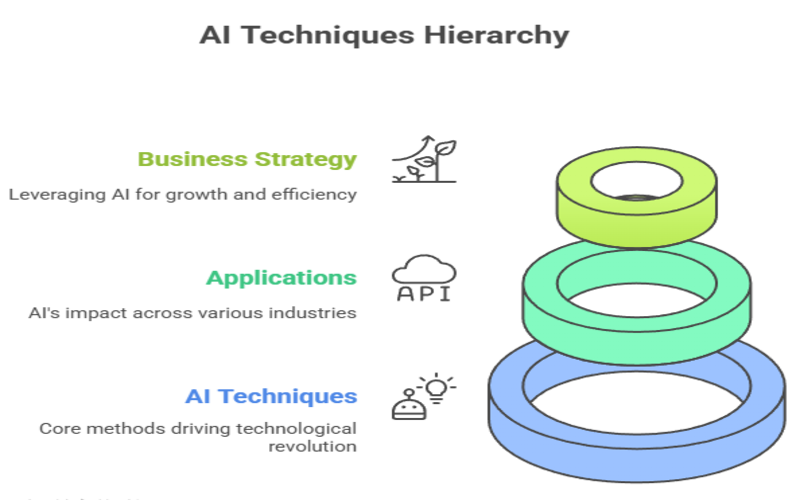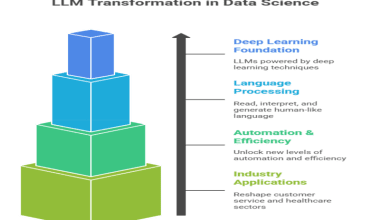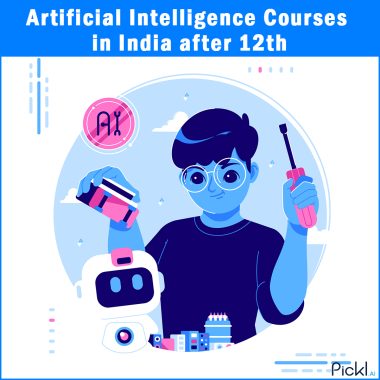Summary: Artificial intelligence techniques power modern automation, analytics, and intelligent systems. This blog explains what AI techniques are, highlights examples like machine learning and NLP, explores industry applications, and guides businesses on leveraging AI for growth. Discover how AI transforms healthcare, finance, manufacturing, and more with practical insights and success strategies.
Introduction
Artificial intelligence techniques are at the heart of today’s technological revolution, powering everything from voice assistants to self-driving cars. For businesses and consumers alike, understanding these techniques unlocks opportunities for growth, efficiency, and innovation. In 2025, artificial intelligence (AI) is not just a buzzword; it’s a practical necessity driving transformation across industries.
This guide breaks down what an artificial intelligence technique is, highlights leading examples, explores how AI is reshaping major sectors, and provides actionable insights for organizations seeking to leverage AI effectively. Whether you’re a business leader, tech enthusiast, or curious consumer, this comprehensive overview covers what you need to know about artificial intelligence techniques.
Key Takeaways
- AI techniques enable machines to mimic human intelligence in performing tasks.
- Machine learning and deep learning are core drivers of intelligent automation.
- NLP and computer vision enhance customer service and data interpretation.
- Businesses use AI for cost reduction, prediction, and process efficiency.
- Strategic AI adoption delivers measurable ROI and competitive business advantage.
What is an Artificial Intelligence Technique?
An artificial intelligence technique refers to the set of algorithms, methods, and processes used to create computer systems capable of performing tasks that typically require human intelligence. These tasks include learning, reasoning, decision-making, problem-solving, perception, and language understanding.
AI techniques enable machines to analyze data, recognize patterns, adapt to new information, and even “think” in increasingly sophisticated ways. By mimicking human cognitive functions, these techniques empower systems to carry out complex tasks—from recognizing speech to predicting market trends—either autonomously or in partnership with humans.
Top Artificial Intelligence Techniques
AI encompasses a broad variety of techniques, each with distinct capabilities and areas of application. Here are the most influential artificial intelligence techniques in use today:
1. Machine Learning (ML)
Machine Learning is the backbone of modern AI. It enables systems to automatically learn and improve from experience without being explicitly programmed. Machine learning can be categorized as:
- Supervised learning: Uses labeled data to train models for prediction or classification tasks.
- Unsupervised learning: Identifies patterns and structures in data without predefined labels.
- Semi-supervised learning: Combines small amounts of labeled data with large amounts of unlabeled data to enhance learning accuracy.
- Reinforcement learning: Machines “learn by doing,” making decisions in a trial-and-error environment, using rewards and penalties to find the optimal strategy.
Example:
Credit scoring, spam detection, facial recognition, dynamic pricing in e-commerce.
2. Deep Learning
Deep Learning is a specialized branch of machine learning that uses neural networks with many layers to analyze complex data. These networks can detect intricate patterns in images, speech, and text, achieving human-level (or even superhuman) performance in some areas.
Example:
Medical imaging analysis, real-time speech translation, autonomous driving systems.
3. Natural Language Processing (NLP)
Natural Language Processing empowers machines to understand, interpret, and generate human language. With NLP, AI systems can:
- Translate languages
- Summarize documents
- Respond to voice commands
- Analyze sentiment in social media or customer reviews
Example:
Virtual assistants (like Siri and Alexa), chatbots, automated translation tools, and sentiment analysis platforms.
4. Computer Vision
Computer Vision enables machines to process and make sense of visual data from photos, videos, or live feeds. With advanced algorithms, AI can identify objects, track movements, and extract valuable insights from visual information.
Example:
Self-driving cars (object detection, lane tracking), security surveillance, quality control in manufacturing, and facial recognition on smartphones.
5. Expert Systems
Expert systems are AI programs that use a set of rules and domain knowledge to solve specific problems and simulate the decision-making ability of human experts.
Example:
Medical diagnosis tools, financial advisory bots, and troubleshooting assistants for technical support teams.
6. Reinforcement Learning
A subset of machine learning, reinforcement learning focuses on training agents that learn from interactions with their environment. Actions are rewarded or penalized, helping the agent refine its strategy over time.
Example:
Robotics (navigation, movement), gaming AI (like winning at Go or Chess), and automated trading systems.
7. Quantum AI
Quantum AI leverages the principles of quantum computing to solve problems far beyond the reach of traditional computers. This next-gen technique is being explored for applications that require massive computational power.
Example:
Drug discovery, market trend prediction, and complex optimization problems in logistics and energy.
Applications of AI in Various Industries
Artificial intelligence techniques are revolutionizing sectors by automating processes, enhancing accuracy, and enabling entirely new solutions. Let’s look at how different industries are leveraging these techniques in 2025:
1. Healthcare
- Diagnostic Imaging: Deep learning identifies diseases from MRI or X-ray scans, with accuracy rivaling top medical professionals.
- Personalized Medicine: AI analyzes data from genetics, lifestyle, and medical records to tailor treatment for each patient.
- Operational Efficiency: NLP extracts insights from clinical notes, optimizing scheduling and resource allocation.
Stat:
AI-powered diagnostic systems are twice as accurate as human experts for some scans and can reduce diagnostic errors by up to 50%.
2. Finance
- Fraud Detection: ML algorithms analyze transaction patterns to catch fraudulent activity in real-time.
- Algorithmic Trading: Reinforcement learning-based bots predict stock market trends and execute high-frequency trades.
- Credit Assessment: AI reviews vast datasets to make rapid, fair, and data-driven lending decisions.
Stat:
AI-powered predictive analytics in finance can reduce fraud losses by over 30% compared to manual review.
3. Retail and E-commerce
- Personalized Recommendations: ML predicts customer preferences and delivers targeted product suggestions.
- Inventory Management: Computer vision and predictive analytics improve stock control and reduce losses.
- Chatbots and Virtual Shopping Assistants: NLP-powered bots offer 24/7 personalized customer service.
Stat:
Nearly half of Fortune 1000 companies now fully integrate AI into their customer engagement strategies, optimizing inventory and boosting retention.
4. Manufacturing
- Predictive Maintenance: AI monitors machinery to forecast failures, reducing downtime and extending equipment lifespan.
- Quality Control: Computer vision automates defect detection on production lines, ensuring higher product standards.
- Automation: Robotics powered by reinforcement learning take over repetitive, high-precision tasks.
Stat:
AI-driven predictive maintenance cuts maintenance-related downtime by 50% in smart factories.
5. Transportation & Automotive
- Self-Driving Cars: ML, computer vision, and reinforcement learning combine to enable autonomous vehicles to perceive, interpret, and act in complex environments.
- Fleet Optimization: AI routes vehicles efficiently and predicts demand using real-time data.
Stat:
Tesla and leading automotive brands now use AI-powered systems to deliver fully autonomous driving features and advanced driver-assistance.
Embracing AI in Your Business Strategy
As digital transformation accelerates, integrating artificial intelligence techniques into business strategy is essential for competitiveness and growth. Here’s how companies can start—and succeed—with AI:
1. Identify High-Impact Use Cases
Pinpoint processes that can benefit most from automation, such as customer support, financial forecasting, or quality assurance. Begin with a few targeted pilot projects before scaling broader.
2. Strengthen Data Infrastructure
AI thrives on high-quality data. Invest in systems that reliably collect, process, and secure data from across the organization. Better data means better AI results.
3. Build Skills and Foster a Culture of Innovation
Upskill staff in AI literacy and encourage experimentation. Cross-functional teams—blending domain experts with data scientists—drive stronger AI project outcomes.
4. Assess and Manage AI Risks
Adopt transparent, ethical AI practices that prioritize data privacy, algorithmic fairness, and explainability. Develop governance frameworks to ensure responsible AI usage.
5. Focus on Measurable ROI
Track outcomes like increased sales, reduced costs, better customer satisfaction, and process improvements. Leading businesses report up to 6.8% higher sales per worker due to AI adoption.
Frequently Asked Questions
What is an AI technique?
An AI technique is a computational method or process—such as machine learning, computer vision, or natural language processing—used to enable computers to perform tasks requiring human-like intelligence, including reasoning, perception, and decision-making.
What are some artificial intelligence techniques examples?
Notable artificial intelligence techniques examples include supervised learning, deep learning, reinforcement learning, expert systems, and natural language processing. These techniques power applications like self-driving cars, chatbots, automated trading, medical diagnostics, and personalized recommendations.
How can businesses benefit from artificial intelligence techniques?
Businesses benefit by automating repetitive tasks, enhancing decision-making with data-driven insights, improving customer experience through personalization, and reducing costs. AI-enabled companies in 2025 achieve higher productivity, better accuracy, and greater competitive advantage compared to traditional operations.
Conclusion
Artificial intelligence techniques are redefining what’s possible for businesses and society in 2025. With methods like machine learning, deep learning, NLP, computer vision, and more, organizations can automate, optimize, and innovate at unprecedented scale.
By strategically embracing AI—starting small, building data capabilities, and focusing on outcomes—businesses unlock a significant edge in an increasingly digital economy.
Whether you’re looking to improve customer engagement, streamline operations, or discover new growth avenues, leveraging artificial intelligence techniques is the smartest move for future-ready organizations.



